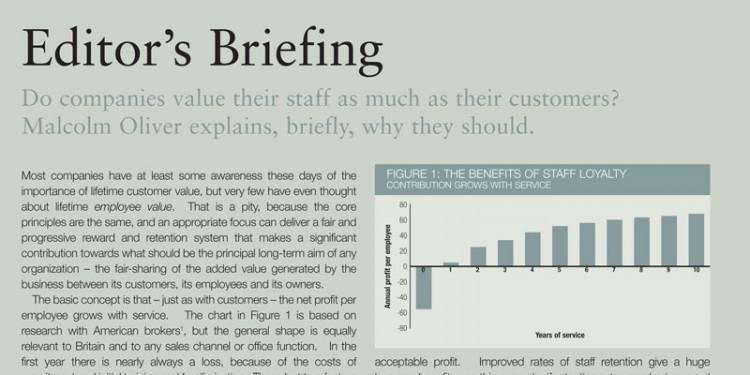Do companies value their staff as much as their customers? Malcolm Oliver explains, briefly, why they should.
Most companies have at least some awareness these days of the importance of lifetime customer value, but very few have even thought about lifetime employee value. That is a pity, because the core principles are the same, and an appropriate focus can deliver a fair and progressive reward and retention system that makes a significant contribution towards what should be the principal long-term aim of any organization – the fair-sharing of the added value generated by the business between its customers, its employees and its owners. The basic concept is that – just as with customers – the net profit per employee grows with service. The chart in Figure 1 is based on research with American brokers1, but the general shape is equally relevant to Britain and to any sales channel or office function. In the first year there is nearly always a loss, because of the costs of recruitment and initial training and familiarization. These last two factors yield two separate penalties – the direct cost of the training provided, and the lower productivity that results from the time given over to this activity. As the years pass, however, the necessary net profit contribution emerges: not only is there a lower direct training cost and higher productivity, but also an indirect contribution from the informal training and support that the now-experienced members of staff give to newer recruits.
To read the full article, please download the PDF above.

